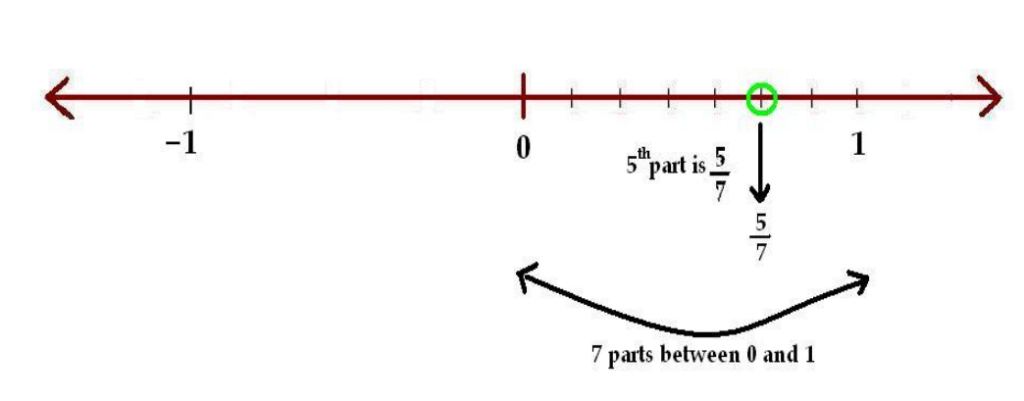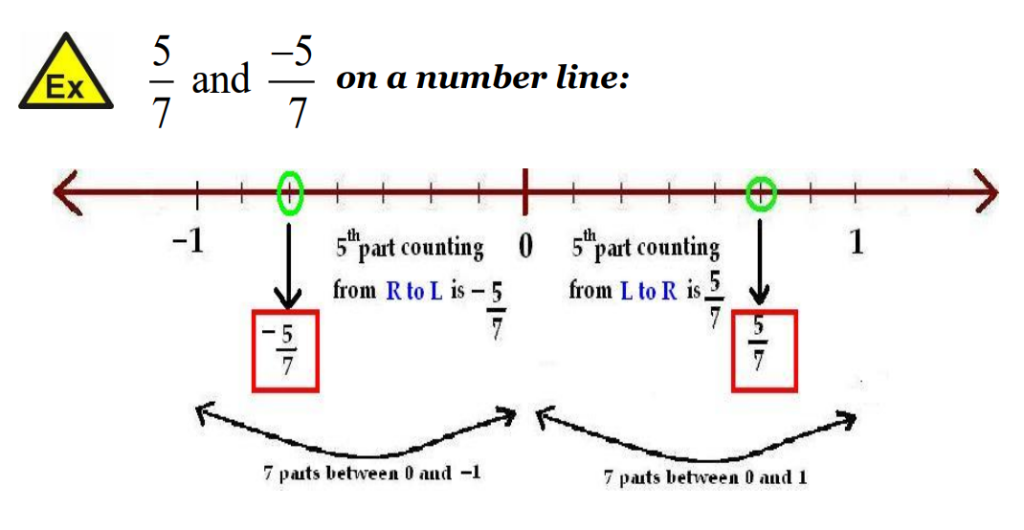Rational Numbers – Complete Guide For Class 7 Math Chapter 8
Welcome to iPrep, your Learning Super App. Our learning resources for the chapter, Rational Numbers in Mathematics for Class 7th are designed to ensure that you grasp this concept with clarity and perfection. Whether you’re studying for an upcoming exam or strengthening your concepts, our engaging animated videos, practice questions and notes offer you the best of integrated learning with interesting explanations and examples.
The chapter on Rational Numbers is designed to deepen students’ understanding of numbers beyond integers, introducing them to fractions and decimals as rational numbers. This chapter focuses on the representation, comparison, and operations of rational numbers. Learning about rational numbers helps students develop a comprehensive number sense, which is essential for tackling more advanced mathematical concepts. By mastering rational numbers, students gain the skills to solve real-world problems involving parts, wholes, and proportional relationships, thereby laying a strong foundation for higher-level math.
Rational Numbers
Basic Specimens
What is a Rational Number?
A rational number is any number that can be expressed in the form p/q, where p and q are integers, and q is not equal to zero (q ≠ 0). In other words, rational numbers include all fractions where the numerator (p) and the denominator (q) are integers, and the denominator is not zero.
Examples of Rational Numbers:
- 5/8
- −5/8
- 5 /−8
These are rational numbers because they can be expressed in the form p/q where 𝑞 ≠ 0
Other examples include:
- -3/7 (numerator = -3, denominator = 7)
- 12/-19 (numerator = 12, denominator = -19)
In a rational number p/q, the integer p is called the numerator, and the integer q is called the denominator.
Characteristics of Rational Numbers
Rational numbers include:
- Integers: e.g., 47 which can be written as 47/1
- Decimals: e.g., 0.83 which can be written as 83/100
- Fractions: e.g., 4/9
Equivalent Rational Numbers
Two rational numbers are equivalent if one can be obtained from the other by multiplying or dividing the numerator and the denominator by the same non-zero integer.
Positive and Negative Rational Numbers
- Positive Rational Numbers: Both the numerator and denominator are positive or negative.
Examples: 4/9, 77/87
- Negative Rational Numbers: Either the numerator or denominator is negative.
Examples: -4/9, 4/-9
Rational Numbers on a Number Line
Rational numbers can be represented on a number line just as fractions are. Since rational numbers can be both positive and negative, both positive and negative sections of the number line are considered.
Steps to Represent a Rational Number on a Number Line:
- Let the rational number be p/q .Divide p by q and obtain the remainder (R) and quotient (Q).
- Write p/q in the mixed fraction form Q ᴿ/q
- Q tells us that p/q lies between integer Q and Q+1.
- q tells us that we need to divide the distance between Q and Q+1 into q parts.
- R tells us to select the RRR-th part out of qqq parts; counting from left to right for positive numbers and right to left for negative numbers.
Example: To represent 5/7 on a number line:
- The rational number is 5/7. Dividing 5 by 7, we obtain the remainder R=5 and quotient Q=0.
- Write 5/7 in the mixed fraction form O⁵/₇
- Q(=0) tells us that the rational number lies between 0 and 1.
- q(=7) tells us to divide the distance between 0 and 1 into 7 parts.
- R(=5) tells us to select the 5th part out of the 7 parts; counting from left to right as 5/7 is a positive rational number.


Rational Numbers in Standard Form
A rational number is said to be in standard form if its denominator is a positive integer and the numerator and denominator have no common factor other than 1.
Example: 7/5 is in standard form because the denominator 5 is positive, and 7 and 5 have no common factor other than 1.
To reduce a rational number to its standard form:
- Make the denominator positive if it’s not.
- Divide the numerator and denominator by their HCF (ignoring the negative sign, if any).
Example: Reduce -9/27 to its standard form:
- Make the denominator positive: 9/27
- HCF of 9 and 27 is 9. Divide the numerator and denominator by their HCF: 9 ÷ 9 / 27 ÷ 9 = 1/3
Comparison of Rational Numbers
- Comparing two positive rational numbers: Make their denominators the same and compare the numerators.
Example: Compare 5/9 and 3/8:
5 × 8 / 9 x 8 = 40 /72 and 3 x 9 / 8 x 9 = 27/72
Since 40/72 > 27/72, 5/9 > 3/8
- Comparing two negative rational numbers: Ignore their negative signs and reverse the order.
Example: Compare – 5/9 and – 3/8:
-5 × 8 / 9 x 8 = -40 /72 and -3 x 9 / 8 x 9 = -27/72
Since -40/72 < -27/72, – 5/9 < -3/8
- Comparing a positive and a negative rational number: Every positive rational number is greater than every negative rational number.
Example: Compare 3/8 and -5/9: 3/8 > -5/9
Rational Numbers Between Two Rational Numbers
There are infinite rational numbers between any two rational numbers.
Example:
To find six rational numbers between 0 and 1:
- Write 1 as 7/7
- The six rational numbers are: 1/7, 2/7, 3/7, 4/7, 5/7, 6/7
Example: List three rational numbers between – 2 and – 1.
Solution: Let us write –1 and –2 as rational numbers with denominator 5.
We have, –1 = -5/5 and –2 = -10/5
So, -10/5 < -9/5 < -8/5 < -7/5 < -6/5 < -5/5 or -2 < -9/5 < -8/5 < -7/5 < -6/5 < -1
The three rational numbers between –2 and –1 would be -9/5, -8/5, -7/5
(You can take any three of -9/5, -8/5, -7/5, -6/5)
Operations on Rational Numbers:
Addition
- With the same denominators:
Example: -9/43 + -1/43 = -10/43
- With different denominators:
Example: 7/11+1/5 = 7 x 5 / 11 x 5 = 35/55 and 1 x 11/ 5 x 11 = 11/55
Additive Inverse
The additive inverse of a number is the number which, when added to the given number, results in zero.
Example: The additive inverse of 5/8 is -5/8 because 5/8 + -5/8 = 0
Subtraction
Subtracting two rational numbers involves adding the additive inverse of the number being subtracted.
Example: Subtract 8/13 from 3/4: 3/4 – 8/13.
Convert to common denominator: 3 x 13 / 4 x 13 = 39/52 and 8 x 4 / 13 x 4 = 32/52
Now 39/52 – 32/52 = 7/52
Multiplication
- While multiplying a rational number by an integer, we simply multiply the numerator with the integer and write the denominator as it is in the product.
- Multiplying a rational number by an integer:
Example: Multiply 7/11 by 3:
3 x 7/11 = 21/11
- While multiplying a rational number by another rational number, we simply multiply the numerator with the numerator and the denominator with the denominator.
- Multiplying two rational numbers:
Example: Multiply 5/9 by -3/7:
5 x -3 / 9 x 7 = -15/63 = -5/21
Reciprocal
The reciprocal of a rational number p/q is q/p.
Example: The reciprocal of 3/5 is 5/3.
Division
Dividing a rational number by another rational number is the same as multiplying the first number by the reciprocal of the second.
Example: Divide 3/7 by 6/13:
3/7 ÷ 6/13 = 3/7 x 13/6 = 3 x 13 / 7 x 6 = 39/42 = 13/14
Key Points:
- Rational numbers are closed under addition, subtraction, multiplication, and division (except division by zero).
- Rational numbers can be represented on the number line, compared, and ordered.
In conclusion, mastering rational numbers is essential for building a strong mathematical foundation. This chapter has equipped you with the skills to understand and work with rational numbers, including their representation, comparison, and operations. With iPrep’s engaging resources, you’ll be able to practice these concepts and apply them confidently. Continue exploring and practicing, as these skills are crucial for tackling more advanced topics and solving real-world problems. Happy learning!
Practice questions on Chapter 8 - Rational Numbers
Get your free Chapter 8 - Rational Numbers practice quiz of 20+ questions & detailed solutions
Practice Now









